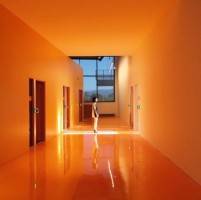April 7, 2015
New UK Green Building Council Chief Executive lists challenges ahead
 Julie Hirigoyen, the former UK Head of Sustainability for property consultants JLL takes over today as the new Chief Executive of the UK Green Building Council. Hirigoyen was previously Managing Director and founding partner of Upstream, a leading sustainability strategy consultancy, acquired by JLL in 2007. She said of her new role today: “Buildings and cities are at the heart of what we need to change if we are to achieve sustainable development. There’s been a huge increase in the importance of this agenda, since when I first started out, we were knocking on closed doors. But we must not kid ourselves – we are only at the early stages of the journey. We are still exceeding the limits of the planet, there are still very few genuinely net positive buildings or companies out there, and we are not achieving sustainability as a scientific concept yet – there is much more to do.”
Julie Hirigoyen, the former UK Head of Sustainability for property consultants JLL takes over today as the new Chief Executive of the UK Green Building Council. Hirigoyen was previously Managing Director and founding partner of Upstream, a leading sustainability strategy consultancy, acquired by JLL in 2007. She said of her new role today: “Buildings and cities are at the heart of what we need to change if we are to achieve sustainable development. There’s been a huge increase in the importance of this agenda, since when I first started out, we were knocking on closed doors. But we must not kid ourselves – we are only at the early stages of the journey. We are still exceeding the limits of the planet, there are still very few genuinely net positive buildings or companies out there, and we are not achieving sustainability as a scientific concept yet – there is much more to do.”
























March 31, 2015
SMEs provide the key to encouraging more women onto boards
by Aki Stamatis • Comment, Workplace, Workplace design
(more…)